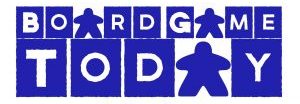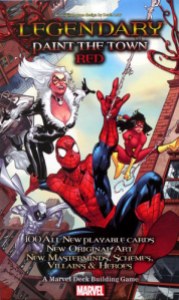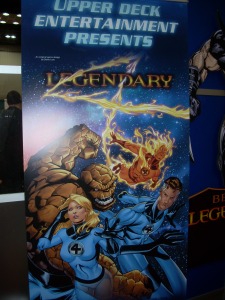Game Review: Legendary Villains – Fear Itself
 Following on the perhaps poorly conceived relaunch/reintegration of the Marvel Legendary franchise from Upper Deck comes one of the most bizarre choices possible for the continuation of the series. The previous Villains title offered some fan favorites, though acting as the protagonists rather than as the the villains, potentially strange choice for the format which has mostly favored heroes. This expansion, the first of the Villains base game and the seventh title thus far in this series, takes on the same dynamic with the strangest inspiration yet. While there might have been a few minor problems with previous releases, they nonetheless gave fans an outlet for their favorite characters by providing a lot of these favorites as playable characters. For instance while some of the mechanics of the Guardians of the Galaxy expansion were a little different from what had come before, at least fans got to play as their favorite character from the books or movie.
Following on the perhaps poorly conceived relaunch/reintegration of the Marvel Legendary franchise from Upper Deck comes one of the most bizarre choices possible for the continuation of the series. The previous Villains title offered some fan favorites, though acting as the protagonists rather than as the the villains, potentially strange choice for the format which has mostly favored heroes. This expansion, the first of the Villains base game and the seventh title thus far in this series, takes on the same dynamic with the strangest inspiration yet. While there might have been a few minor problems with previous releases, they nonetheless gave fans an outlet for their favorite characters by providing a lot of these favorites as playable characters. For instance while some of the mechanics of the Guardians of the Galaxy expansion were a little different from what had come before, at least fans got to play as their favorite character from the books or movie.
While Marvel doesn’t tend towards the company wide crossover as much as DC Comics does, it still occurs, and one of the more recent crossovers was also one of the more lackluster – Fear Itself. Although big things were planned for this story, it ended up as a bit of a missed opportunity for Marvel to pull out all the stops. This crossover thus is a strange inspiration for the first expansion of this series. After all while the villain focused approach to the games might be a little weird, it is still conceivable that someone might want to play as Magneto or Venom. But how many comic/board games fans have always wished that they could invoke the essence of Null or Skadi? No? Then how about Kuurth, Nerkkod or Greithoth? Probably also no. It is conceivable, especially considering that the following expansion is for Secret Wars, that there is some hope of a boost to sales of trade paperbacks through these release of expansions for the Legendary Universe, because really nothing else makes sense in terms of the overall logic behind the releases.
For the non-comic fans among the gamers interested in the Legendary franchise, this will likely be more of the same, another sequence of cards that mean little outside of their in game text, but for fans of both mediums, they are likely to be somewhat confused by the choices here. It is nice to see some of the usual Marvel heroes making an appearance here as adversaries, but once again that is only a tease for their own inclusion in the game itself as playable characters (such as Ms. Marvel.) On the whole this is the most confusing and least sensical of all the expansions thus far, taking the direction of the otherwise fun base game(s) in a strange direction.
Score: 7.0











